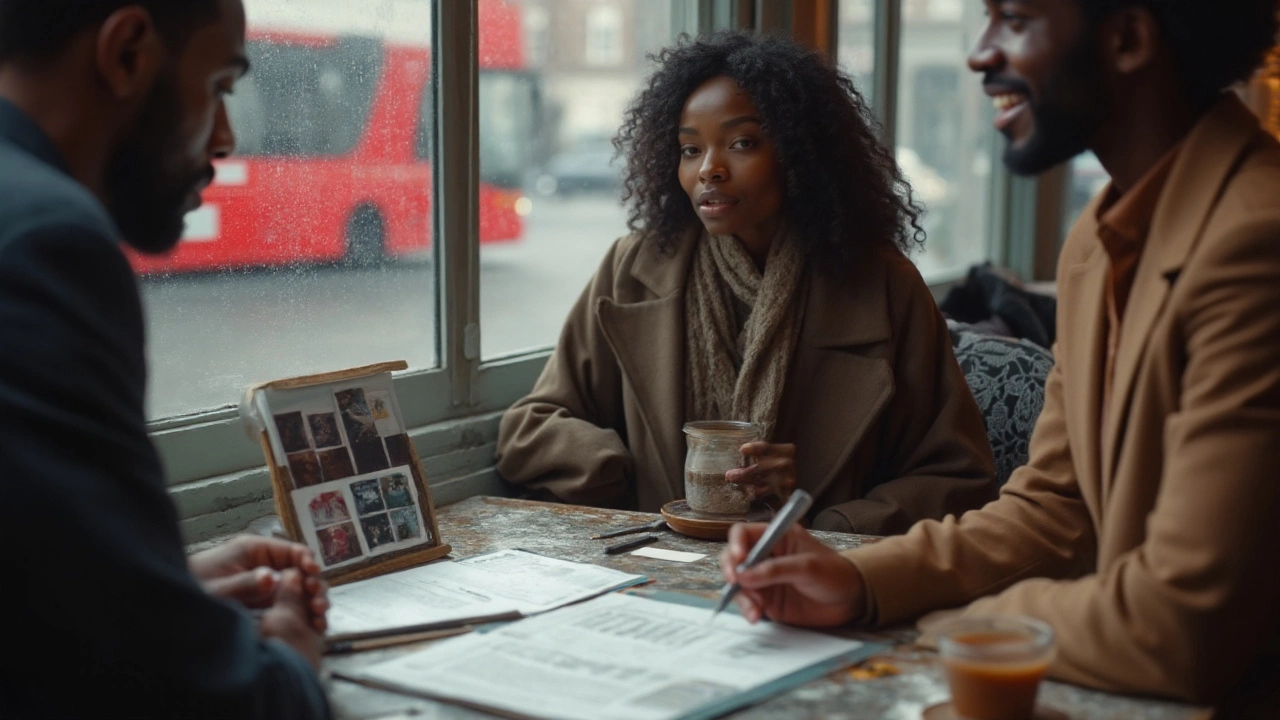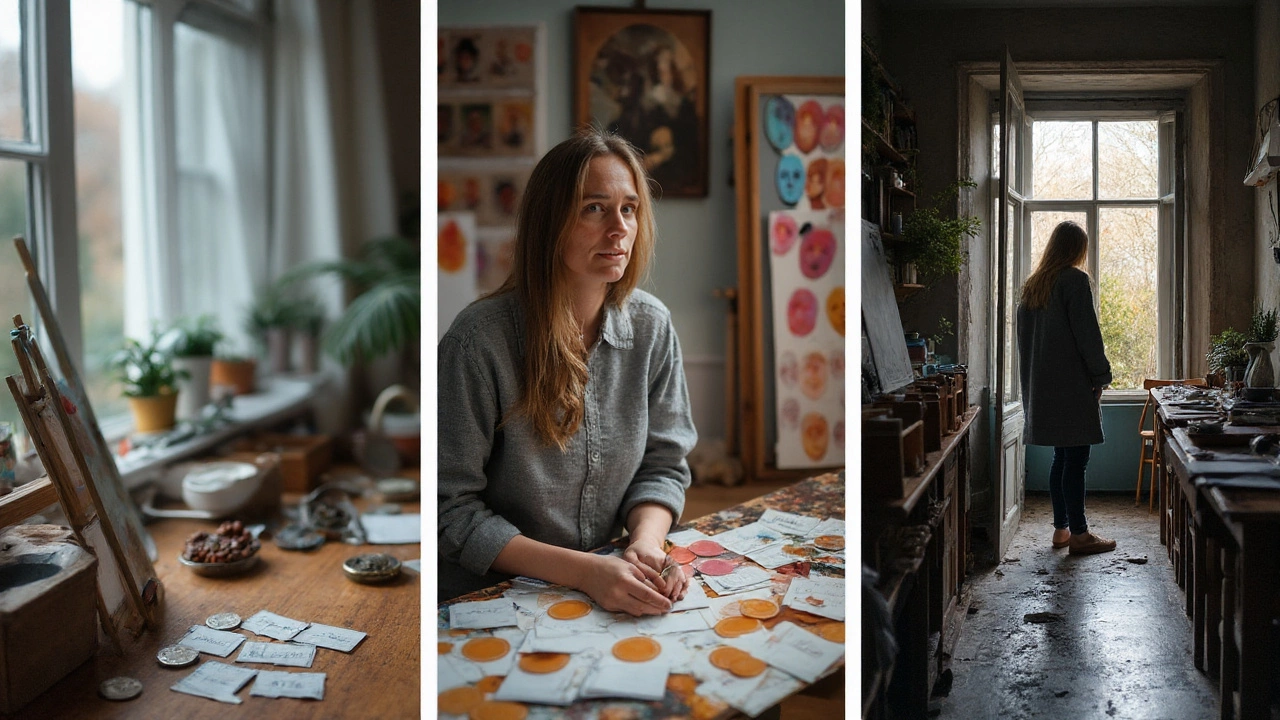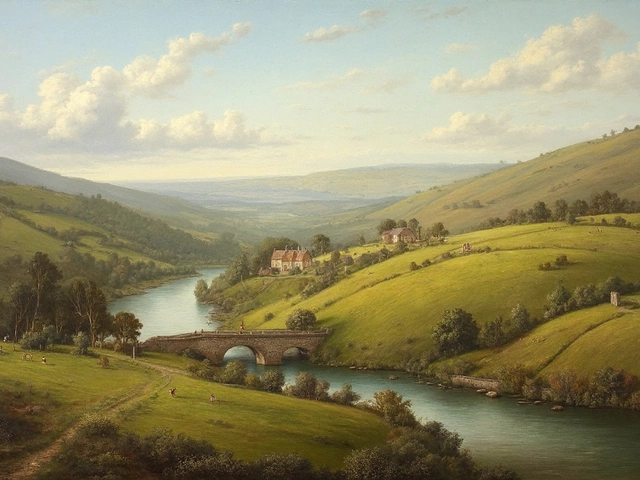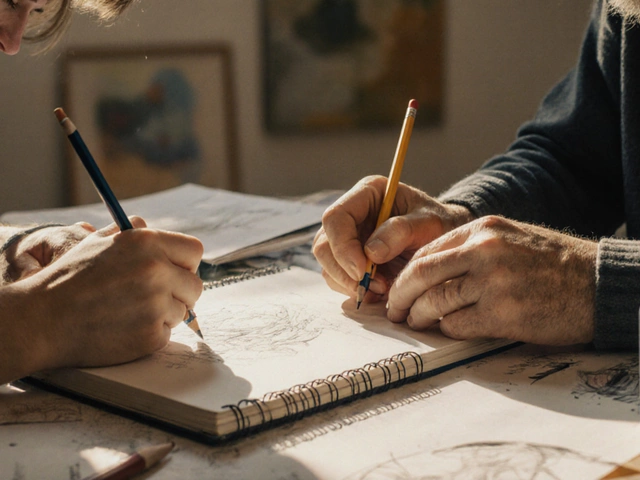You know a good portrait when you see it. The eyes feel alive, the pose tells a story, and it looks like the person-without feeling like a flat copy of a photo. Yet picking the right artist can feel like a gamble. The stakes are real: this image might hang on your wall for decades, or represent your family or organization. Here’s the short path to a portrait that looks like your person and feels like them, without getting burned on cost, time, or quality.
Quick answer and a simple plan
TL;DR (what to do next):
- Decide your goal: heirloom, gift, corporate, or quick study. That choice sets style, size, and budget.
- Pick a style and medium you’d love forever: classical oil, loose alla prima, charcoal, watercolor, digital.
- Set a budget range and timeline. Portraits usually run from a few hundred to five figures depending on scope.
- Shortlist 3-5 artists whose recent work shows consistent likeness, hands, and lighting.
- Interview them: process, sittings vs. photos, deposit, milestones, and rights. Ask for a simple contract.
- Book early, pay a deposit, agree on a clear brief, approve a sketch, and lock the calendar.
- Watch for red flags: no contract, vague timelines, copycat style requests, promises of “unlimited revisions.”
Step-by-step (fast version):
- Define the job-Who’s the subject, what’s the mood, where will it hang, when do you need it? A dignified corporate head-and-shoulders in oil isn’t the same job as a playful charcoal of a toddler.
- Choose medium-Oils are durable and sculptural; charcoal is expressive and faster; watercolor is airy; digital is flexible on timing and delivery. Pick what matches your taste and deadline.
- Size and pose-Head-and-shoulders is budget-friendly and classic. Three-quarter shows hands (a test of skill). Full-length adds drama and cost.
- Budget-Decide a range before you shop. Be candid with artists; many offer multiple tiers.
- Shortlist-Search portfolios by medium and subject similar to yours: kids, elders, couples, professionals. Save 3-5.
- Vet-Check recent work, not just greatest hits. Look for consistent likeness, natural skin tones, good hands, believable light.
- Process & terms-Ask about sittings, reference photos, number of studies, revision policy, timeline buffer, payments (deposit, progress, final), and rights (personal vs. commercial).
- Contract-Get it in writing. Scope, size, medium, timeline, milestones, revision limits, kill fee, payment schedule, framing, shipping.
- Kickoff-Share 2-3 reference photos or schedule a sitting. Approve a sketch/composition before paint flies.
- Check-ins-Hit agreed milestones (composition, color study) rather than constant micro-edits. Give clear feedback.
Decision heuristics:
- If you need it in under 3 weeks, pick charcoal, watercolor, or digital. Oil needs drying time.
- If likeness matters above all, pick an artist with lots of recent work in the age range you need (kids are hard).
- If budget is tight, choose a smaller size or single subject rather than compromising on artist quality.
- If it’s for public display, insist on a formal contract and an approval stage.

Deep dive: style, budget, vetting, process, and the traps to avoid
First, be honest about purpose. Heirloom portraits can carry family history for generations; a surprise gift needs a firm date; a corporate commission has brand and PR needs. Purpose determines everything-from lighting and clothes to framing and rights.
Style and medium in plain terms:
- Classical oil-Built in layers, rich skin, real depth. Great for heirlooms and formal settings. Slower, pricier, worth the wait.
- Alla prima oil-Painted wet-in-wet, one or few sittings, energetic brushwork. More spontaneous; still requires drying time.
- Charcoal or graphite-Expressive, timeless black and white. Faster, budget-friendly, strong likeness when done well.
- Watercolor/gouache-Light, fresh, and tricky to fake. Lovely for children and casual settings.
- Digital painting-Flexible schedules, quick revisions, delivered as high-res files. You can print on canvas or paper; archival quality depends on print materials.
What to look for in a portfolio (quick tests):
- Eyes and edges-Do the eyes look wet and alive, not glassy or over-sharpened? Are edges varied, not all razor or all fuzzy?
- Skin temperature-Natural shifts-warmer in cheeks, cooler in shadows-signal skill. Flat “plastic” skin is a warning.
- Hands-If they avoid hands or hide them, it may mean limited figure skill. Hands reveal a lot about an artist.
- Light-Does light have a clear direction? Good light unifies a portrait. Multiple mismatched photo sources are a red flag.
- Age range-Kids, teens, and elders are different beasts. Shortlist artists who show your target age convincingly.
- Consistency-Can they repeat quality across different clients, or is one piece an outlier?
Budget, plain talk. Expect a wide range. In North America in 2025, a single-subject head-and-shoulders charcoal by an emerging artist may start in the low hundreds, while a full-length oil by an established painter runs into five figures. Prices scale with artist reputation, complexity, size, medium, and deadlines.
For Canadian readers, many artists reference CARFAC (Canadian Artists’ Representation) fee schedules when setting baselines for professional work and usage; while meant for exhibitions and licenses, they frame the idea that creative labor and rights have real value. For the U.S., the Portrait Society of America, the Royal Society of Portrait Painters (UK), and public price lists from established portraitists are reliable anchors when comparing quotes. I live in Vancouver and see these references come up often in contracts and conversations with clients.
How to talk money without it getting awkward:
- Share your range early. Artists can suggest scope that fits-smaller size, monochrome, or a study instead of a finished oil.
- Ask for a quote that lists size, medium, subject count, background complexity, sittings, framing, and shipping separately.
- Expect a deposit (often 30-50%) to secure the slot. Progress payment at sketch approval is common. Final on delivery.
- Rush fees are normal when timelines compress. Oil needs drying and varnish time; you can’t rush chemistry.
Process-what “good” looks like:
- Discovery-You share intent, subject photos or schedule a sitting, wall measurements, vibe references.
- Sketch/comp approval-Artist offers a composition or color study. You approve pose, crop, and general palette-not micro details.
- Execution-Work proceeds in agreed phases. You see progress at milestones, not daily.
- Drying/varnish (oils)-Oils need time to cure before final varnish and shipping.
- Delivery-Packed or framed as agreed. You sign off on condition at arrival or pickup.
Contract terms that protect both sides (include these):
- Scope: size, medium, subject(s), background complexity, framing inclusion.
- Timeline: start date, milestones, buffer, delivery date.
- Revisions: what’s included (e.g., one composition change, minor color tweaks), what’s billable.
- Payment: deposit %, milestone payments, final, and acceptable methods.
- Kill fee: what happens if either party cancels mid-project.
- Rights: personal display vs. commercial promotion, social media posting, and whether you’ll receive reproduction rights.
- Shipping/insurance: who pays, who carries the risk in transit, condition report on delivery.
Reference photos and sittings-quick tips:
- Natural light beats phone flash. Window light from one side gives form and mood.
- Consistent source photos matter. Don’t mix noon sun with indoor tungsten; the color casts will fight.
- Provide a few expressions that feel like the subject. The best portraits catch an honest micro-moment, not a forced smile.
- If possible, a short live sitting gives nuance: true colors, posture, eye color, and personality cues.
How to assess reviews and refs:
- Look for recent testimonials that mention communication, hitting deadlines, and likeness.
- Ask one client reference if it’s a major commission. Keep it short: Did the artist stick to the plan? Any surprises?
- Public exhibitions or society memberships don’t guarantee fit, but they can indicate professionalism.
Red flags (walk away if you see these):
- No written agreement, vague timelines, or reluctance to specify revision limits.
- Promises of “unlimited revisions”-usually a sign of scope creep and conflict later.
- Insistence on copying another artist’s signature style or a copyrighted photo. Ethical and legal problems ahead.
- Full payment upfront with no milestones or deposit receipts.
- Portfolio made of AI-generated faces or heavily filtered photos passed off as painting. Ask about process and materials; real artists are proud to explain.
Two trade-offs people underestimate:
- Time vs. quality-Good portraits need layered decisions. If you chop the schedule, choose a simpler medium rather than ask the impossible of oil drying time.
- Scale vs. likeness-It’s easier to get a truthful likeness at head-and-shoulders scale. If budget is tight, keep scale modest and quality high.
Reality check on likeness. A perfect photographic resemblance isn’t the only goal. You want truth plus presence. The best test is this: would the subject’s closest person recognize them instantly and feel something? Pick an artist whose recent work passes that test for you-again and again.

Tools: checklists, price ranges, FAQs, and next steps
Quick checklist when you choose a portrait artist:
- Purpose locked (heirloom, gift, corporate)?
- Style/medium chosen (oil, charcoal, watercolor, digital)?
- Size and setting (head-and-shoulders, three-quarter, full-length)?
- Budget range and deadline known?
- Shortlist of 3-5 artists with relevant, recent work?
- Process fit (sittings vs. photos) and communication style you like?
- Written quote with scope, milestones, and rights?
- Contract signed; deposit paid; calendar hold confirmed?
Rule-of-thumb decision tree:
- If your deadline is under 2-3 weeks → pick charcoal, watercolor, or digital; go head-and-shoulders; skip complex backgrounds.
- If your budget is under $1,000 USD / $1,300 CAD → consider charcoal or graphite by emerging artists; keep it small; one subject.
- If it’s for a boardroom or public space → oil, larger scale, and a proven track record. Budget accordingly and build in approvals.
- If the subject is a child → shortlist artists who show multiple kids in their portfolio; schedule short, fun sittings or use candid references.
- If you want print and social promotion rights → negotiate those in the contract; usage rights are separate from the physical artwork.
Typical 2025 portrait commission ranges (North America). These are aggregated from public price lists of established portraitists, Canadian guild norms often framed by CARFAC’s emphasis on professional fees, U.S. society guidelines, and current studio quotes I’ve seen in 2024-2025. Expect regional and artist-by-artist variation.
| Medium & Scope | Typical Size | Price Range (USD) | Approx (CAD) | Sittings/Ref | Turnaround |
|---|---|---|---|---|---|
| Charcoal/Graphite, Head & Shoulders (1 subject) | 11×14"-16×20" | $400-$2,500 | $550-$3,300 | Photos or 1 short sitting | 1-4 weeks |
| Watercolor/Gouache, Head & Shoulders | 11×14"-16×20" | $600-$3,000 | $800-$4,000 | Photos; 1 study optional | 2-6 weeks |
| Oil, Head & Shoulders | 16×20"-20×24" | $1,800-$10,000 | $2,400-$13,500 | Photos + 1-2 sittings preferred | 6-16 weeks (incl. drying) |
| Oil, Three-Quarter (includes hands) | 24×30"-30×40" | $3,500-$20,000 | $4,700-$27,000 | Photos + multiple sittings | 8-24 weeks |
| Oil, Full-Length | 36×48" and up | $7,000-$50,000+ | $9,500-$67,500+ | Photos + several sittings | 12-32 weeks |
| Digital Painting, Head & Shoulders (delivered as files) | High-res for print | $500-$3,000 | $700-$4,000 | Photos; remote check-ins | 1-4 weeks |
Notes:
- Framing and shipping are often extra; ask for a line item.
- Add 25-50% for each additional subject, depending on size and interaction.
- Rush timelines can add 15-40% due to schedule reshuffling and, for oils, drying hacks are limited.
Mini-FAQ
- How many revisions should I expect? One composition change and small color tweaks are common. Major repainting usually costs more. Clarity at the sketch stage avoids heavy revisions later.
- Do I need a live sitting? Not always. Many great portraits are from high-quality photos. One short sitting adds color accuracy and presence.
- Can I use the portrait image on invitations or a website? Only if your contract grants reproduction rights. Personal display is standard; publishing and marketing may need a license.
- What about kids and pets? Pick artists who show them convincingly. Plan shorter, fun sessions or provide candid photos with good light.
- What if I don’t love the result? This is where milestones, reference choices, and clear feedback help. Most contracts include a process to resolve issues; beyond that, revisions are billable.
- Is digital “less real” than oil? It’s a different medium, not fake. Quality depends on the artist’s skill and your printing/framing choices. For heirlooms, many still prefer oil for its physical presence and longevity.
- Any etiquette tips? Don’t ask an artist to imitate another artist’s signature look. Share honest preferences early. Be on time for sittings. Approve milestones promptly.
Risks and how to avoid them:
- Scope creep-Lock details at the start; changes later cost time and money.
- Timeline slippage-Add buffer; agree on check-in dates; don’t compress oil drying time.
- Shipping damage-Insure shipments; require photos of packing; unbox with care and document condition.
- Expectation mismatch-Approve a sketch and color study. Make sure everyone sees the same reference photos.
Next steps (do this in an hour):
- Write a one-paragraph brief: subject, purpose, mood, deadline, wall size, and budget range.
- Save 5 portraits online that feel right; look at what they share (light, brushwork, pose).
- Shortlist 3-5 artists who show at least three recent works like what you want.
- Email a concise inquiry: your brief, desired size/medium, deadline, and 2-3 reference photos. Ask for availability and a ballpark quote.
- Choose the best fit on style + process + timeline, not price alone. Request a simple contract, pay the deposit, and book a kickoff.
If something goes sideways:
- Deadline risk-Downgrade scope (head-and-shoulders), switch to charcoal or digital, or push the event reveal to a high-quality print with the original to follow.
- Budget crunch-Reduce size, simplify background, or commission a study now and a full oil later.
- Creative stalemate-Return to the brief and reference photos. Decide one keeper goal (likeness, mood, or gesture) and cut optional asks.
One last practical filter I use in Vancouver: could I live with this piece on my own wall for ten years? If yes, that’s your artist. If you’re hesitating, keep looking. A portrait is part likeness, part time capsule, part love letter. Choose the person who can deliver all three.



